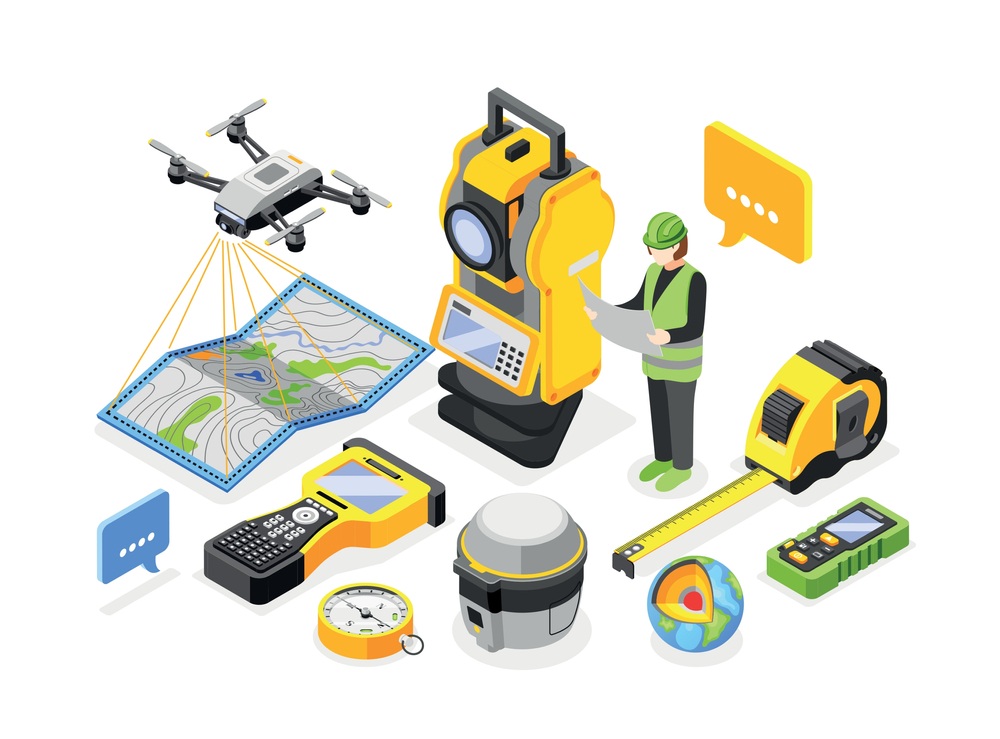Land surveying has
been a fundamental aspect of land management for centuries. It involves
measuring and mapping land boundaries, topography, and other features of the
land. Traditionally, land surveying has been a manual process that involved a
lot of manual calculations and measurements. However, with the advent of new
technologies, land surveying has undergone a revolution that has made it
faster, more accurate, and more efficient than ever before.
In this blog post, we will explore how
technology is revolutionizing land surveying and the impact it has on the
industry.
1. Global Positioning System (GPS)
The introduction of GPS technology has
revolutionized land surveying. GPS is a network of satellites that orbit the
earth and transmit signals to GPS receivers on the ground. By triangulating
these signals, a GPS receiver can determine its precise location. Surveyors can
use GPS technology to accurately map land features and boundaries.
GPS technology has several advantages over
traditional surveying methods. For one, it is faster and more accurate.
Surveyors can cover more ground in less time, which means they can complete
projects faster. GPS technology is also more precise than traditional surveying
methods, which means that surveyors can measure distances and angles with
greater accuracy.
2. Geographic Information System (GIS)
Geographic Information System (GIS) technology
has also revolutionized land surveying. GIS is a computer-based system that
allows surveyors to store, analyze, and manipulate geographic data. This data
can include land boundaries, topography, and other features of the land.
GIS technology has several advantages over
traditional surveying methods. For one, it allows surveyors to analyze and
visualize data in new ways. They can create maps, charts, and graphs that show
patterns and trends in the data. GIS technology also allows surveyors to share
data with others, which means that multiple stakeholders can access and use the
same data.
3. Drones
Drones have become increasingly popular in
recent years, and they have revolutionized land surveying. Drones are unmanned
aerial vehicles that can be equipped with cameras and other sensors. Surveyors
can use drones to capture high-resolution images and videos of land features
and boundaries.
Drones have several advantages over
traditional surveying methods. For one, they can capture data from
hard-to-reach areas. Surveyors can use drones to survey steep or inaccessible
terrain, which would be difficult or impossible to survey using traditional
methods. Drones are also faster and more efficient than traditional surveying methods,
which means that surveyors can complete projects more quickly.
4. 3D Scanning
3D scanning is another technology that has
revolutionized land surveying. 3D scanners use lasers or other sensors to
capture detailed, three-dimensional images of land features and boundaries.
These images can be used to create highly accurate 3D models of the land.
3D scanning has several advantages over
traditional surveying methods. For one, it allows surveyors to capture highly
detailed data. 3D scanners can capture data with sub-millimeter accuracy, which
means that surveyors can measure distances and angles with extreme precision.
3D scanning also allows surveyors to create highly accurate 3D models of the
land, which can be used for a variety of purposes.
Conclusion
In conclusion, technology has revolutionized
land surveying in many ways. GPS technology, GIS technology, drones, and 3D
scanning have all made land surveying faster, more accurate, and more
efficient. These technologies have also made it possible to survey
hard-to-reach areas and capture highly detailed data. As technology continues
to evolve, it is likely that land surveying will continue to become more
advanced and more efficient.
